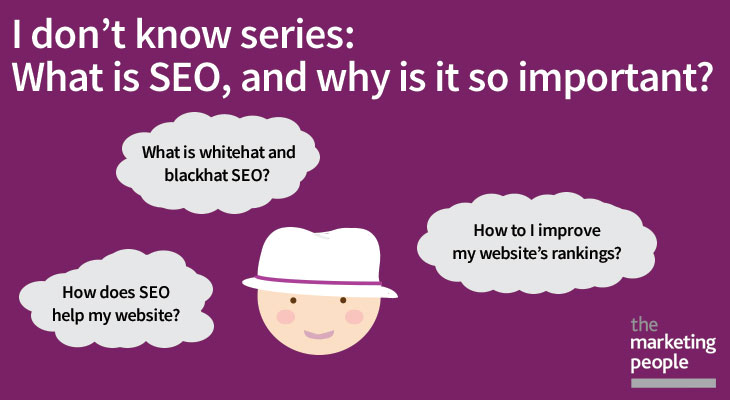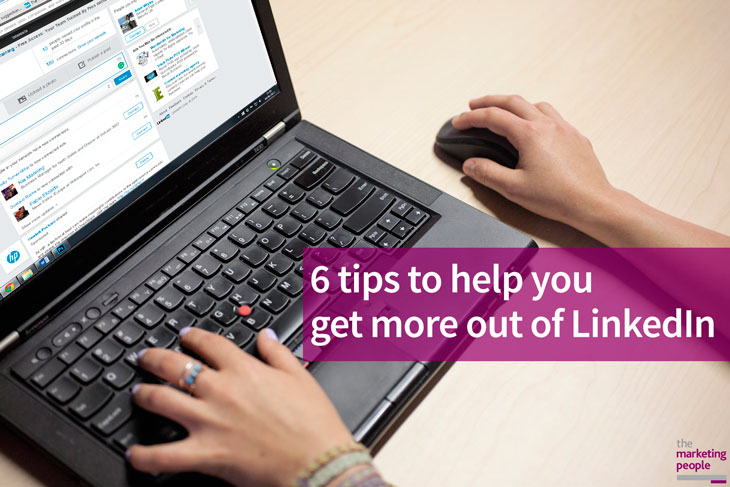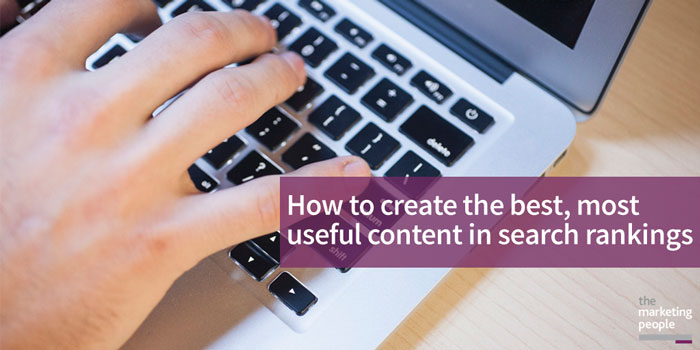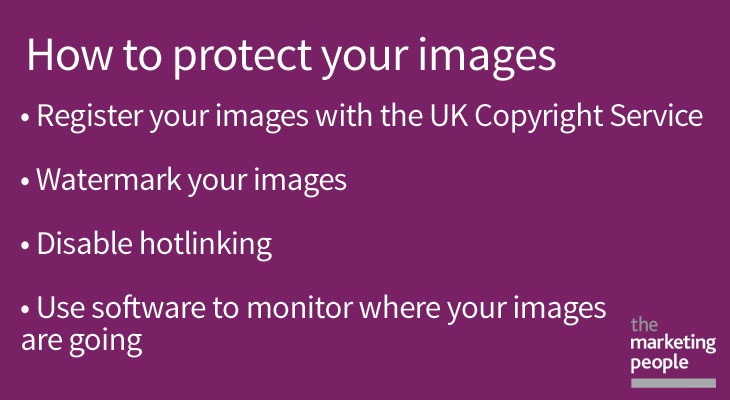

SEO stands for search engine optimisation; it’s a method used to help your website show up higher in search results.
The reason SEO is so important is because the higher your website shows up in search results, the more visitors your website gets. And if your website works well, that will translate into more leads and sales.
A study carried out in 2014 found that on average, 71.33% of searches resulted in a click through to one of the organic search results on the first page. Additionally, the first five results account for 67.60% of all clicks.
As you can see, ranking on the first page of search results can bring you a lot of traffic that you just won’t get from search engines if you’re below page one.
SEO is not an exact science. You should run a mile from anyone who tells you that they can guarantee they’ll get you ranking first in search engines.
Depending on how much you know about SEO (but we’re going to hazard a guess that you don’t know a lot if you’re reading this). You may have heard that it is all about building links, and the more links you have the better. Well, that’s still kind of true, but not in the way it used to be.
A little history
In years gone by, you could literally buy thousands of links, and that would result in your website ranking better. It didn’t matter what kind of website was linking back to yours, or the quality of your website. If you had lots of links, your website would rank well.
But then, to the joy of internet users, search engines got wise and their algorithms improved.
It’s easy to see search engines as ‘the bad guy’, but their role is to provide users with the best possible search results. This means they have to rank websites in order of the most useful and relevant first.
If they don’t do that and show irrelevant websites on the first page of search results instead. They aren’t answering the user’s questions, and the user will switch to another search engine. That results in less users for the search engine. Which translates into less revenue from advertising because the audience is smaller.
This is why whitehat SEO is now about providing visitors to your website with the best experience you can. The better their experience on your website, the better your rankings.
What’s this “whitehat SEO” you just mentioned?
If you carry out SEO which adheres to search engine’s rules, it’s called ‘whitehat SEO’. This means you’re doing it by the book, and search engines have no issue with your practices.
As you might imagine, blackhat SEO is when you carry out spammy techniques (such as buying links, hiding content, keyword stuffing, etc). Which search engines do not approve of, and you risk being de-indexed.
Greyhat SEO is somewhere in between the two. Where you carry out some blackhat practices, or things that search engines aren’t particularly clear on.
The best thing to do, of course, is to only carry out whitehat SEO practices. Yes, there are times where you might see a website ranking above yours that is using blackhat SEO practices. But algorithms are updating all the time, and it isn’t worth carrying out blackhat techniques and risk getting de-indexed and losing visitors.
What happens if I do blackhat SEO?
As we mentioned above, blackhat SEO involves using practices which try to trick search engines into giving a website a higher ranking.
If you do this, you may end up being penalised or de-indexed. If you’re penalised, you may see your search rankings take a hit. Whereas if you’re de-indexed, you won’t show up in that search engine at all.
Either way, the result will be a loss of traffic, and potential leads and sales, from search engines.
If you clean up your act and your website, you can submit a reconsideration request. If the search engine decides you are no longer spammy. Or no longer using blackhat techniques, you will start appearing in search results again.
Be mindful that if you buy a domain which was previously owned, the previous owners actions can result in your website not being indexed.
A couple of years ago, one of our clients bought a domain. We developed a website on it, but it wasn’t indexing in Google at all. We hadn’t carried out any spammy techniques. And we’d developed the website exactly the same as the hundreds of other websites we’d developed.
In the end, it turned out that the previous domain owner must have carried out blackhat techniques. We had to submit a reconsideration request to Google. The request was processed, and the website began appearing in search results.
How do search engines crawl websites?
To crawl websites, search engines use software robots called spiders. Spiders work by ‘visiting’ a website and following every link on that site and indexing the websites it crawls.
This helps search engines to discover pages on that, the contents of the website, and the websites it links out to. This creates a big ‘web’ or an index.
Search engines then store all this information for later to create a cache. When you search for something, the search engine will search the cache, rather than live searching the web.
Submitting a sitemap to each search engine is a good way of helping the spiders find and crawl your website.
That is a brief overview of how search engines crawl the web, but if you want a detailed review, Woorank have a really simple, and in-depth explanation.
How do search engines decide what order to rank websites?
Search engines use complex algorithms, which no one other than those who work on it completely understand, to decide what order to rank websites in when you search.
What factors (called ranking factors) they take into account when deciding on ranking varies from search engine to search engine, and again, no one knows exactly what is taken into account.
That being said, we know that websites which perform well often have these traits:
- Have good user experience – users don’t have any problem navigating these websites.
- Contain truly useful content – users find what they’re looking for, and don’t leave immediately with their question unanswered.
- Load quickly – 47% of people expect a website to load in 2 seconds, or less.
- Is mobile-friendly – as of April 2015, mobile-friendly is a ranking factor; if your website does not perform well on a mobile, your rankings in mobile searches may suffer.
- Have, and attract, high quality inbound links – the better your content, the more likely you are to attract links from top, authoritative websites. If your website has a lot of links from high quality websites, it’s a sign you too, are a high quality website.
- Have a low bounce rate – to search engines, a high bounce rate (this is the number of people who leave your website having only visited one page) means users didn’t find what they were looking for.
How do I get my website to rank at the top of search engines?
SEO is no longer just about building links, it looks at every aspect of your website, especially user experience.
To reach the top of search rankings, you need to be providing your visitors with the best possible experience. In short, your website should be very user-friendly and contain high quality, useful content.
If your site has lots of backlinks from other reputable websites, that’s also a clear sign to search engines that your website is trustworthy.
It isn’t an exact science at all, and the best way to approach SEO, is to think about your customers, and your own experience using websites; think about how to give them the best experience you can, and your rankings will improve.
To find out how you can improve your content, read our recent blog post about how you can create the best, most useful content in search results.
But, how do search engines know if my content is useful?
It might seem like a bit of a mind bender; how does an algorithm understand whether or not content is useful?
Since they can’t understand content like we can, algorithms look at a huge amount of information, including:
- What keywords content contains
- Whether content has been scraped or stolen from another website
- Whether or not it contains spelling or grammatical errors
- If it has a very low word count – content that is very short, is not likely to be as helpful as long content
- How long people spend on a particular page
- The bounce rate – that’s how many people enter your website and leave before clicking through to another page
- Links to it and the kind of website those links are coming from
SEO is a huge beast, which covers many aspects of your website, but the best thing to do is to create a website, and content, which gives your user’s the best experience possible.
If you are struggling with SEO, or your website isn’t performing as well as hoped, get in touch to find out how we can make your website work hard for you, and improve your website. Or, you can read more about SEO in our blogs.








